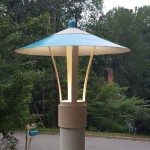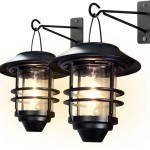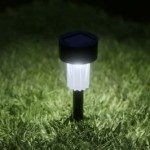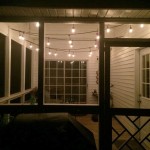How Often Do You Have To Fill an Outdoor Wood Boiler?
Outdoor wood boilers, also known as wood-fired central heating systems, are gaining popularity as a sustainable and cost-effective way to heat homes. They utilize wood as fuel, a renewable resource, and can significantly reduce reliance on fossil fuels. However, one common question that arises is, "How often do I need to fill the boiler with wood?" The answer depends on several factors, including the boiler's size, the home's heating needs, and the type of wood used. This article sheds light on the frequency of wood filling and the key factors influencing it.
Boiler Size and Heat Output
The size of the outdoor wood boiler and its heat output play a crucial role in determining how often you need to refill it with wood. Larger boilers with higher heat outputs can hold more wood and burn longer, reducing the frequency of refills. A smaller boiler, on the other hand, will require more frequent wood additions to maintain a consistent heat supply. The heat output is typically measured in British thermal units (BTUs), and a higher BTU rating indicates a greater heat capacity.
For instance, a boiler with a 100,000 BTU output might need to be refilled once every 8-12 hours, while a larger boiler with a 200,000 BTU output could run for 12-16 hours or even longer on a single fill. It's important to choose a boiler size that matches the heating needs of your home to avoid oversizing or undersizing. A correctly sized boiler ensures optimal efficiency and minimizes the need for frequent wood refills.
Home's Heating Needs
The size of your home and its insulation levels significantly impact the wood consumption of your outdoor wood boiler. A well-insulated home with efficient windows and doors will require less heat to maintain a comfortable temperature compared to a poorly insulated home. This translates to less frequent wood refills for a well-insulated home. Conversely, a poorly insulated home with drafts might require more frequent wood additions to keep the temperature consistent.
Furthermore, the climate you live in also influences your heating needs. In colder climates with prolonged periods of freezing temperatures, the demand for heat is significantly higher, requiring more frequent wood refills. In milder climates with shorter periods of cold weather, the frequency of refills can be reduced. Evaluating your home's insulation and climate conditions is crucial to determine the appropriate boiler size and predict the frequency of wood refills.
Wood Type and Moisture Content
The type of wood used as fuel in your outdoor wood boiler significantly impacts the duration of a single burn. Different wood species have varying densities and moisture contents, which affect their burning rate. Hardwoods like oak, maple, and hickory are denser and have lower moisture content, burning longer and producing more heat compared to softwoods like pine or spruce.
The moisture content of wood, also known as the "green" or "wet" weight, plays a critical role in its burning efficiency. Dry wood with a moisture content below 20% burns more efficiently and produces higher heat output compared to wet wood with a higher moisture content. Wet wood generates less heat and produces more smoke, leading to increased maintenance and more frequent refills. Therefore, using dry, seasoned wood is essential for maximizing the efficiency of your outdoor wood boiler and minimizing refill frequency.
Other Factors Affecting Wood Consumption
Besides the factors mentioned above, several other aspects contribute to the frequency of wood refills in an outdoor wood boiler. These include:
- Boiler operating settings: The temperature settings of your boiler can influence the amount of wood consumed. Higher temperature settings require more wood to maintain the desired temperature, leading to more frequent refills.
- Boiler maintenance: A well-maintained boiler burns more efficiently, reducing the need for frequent wood additions. Regular cleaning of the ash pan, firebox, and other components ensures optimal performance.
- Outdoor temperature: The outdoor temperature, especially during periods of extreme cold, can significantly influence the heat demand and therefore the frequency of wood refills.
By understanding these factors and taking necessary precautions, you can optimize the efficiency of your outdoor wood boiler and minimize the need for frequent wood refills.

Outdoor Wood Boiler

Outdoor Wood Coal Boiler Installation

Wood Boiler Basics Obadiah S Boilers

How An Outdoor Boiler Works Ez Boilers

Wood Boiler Water Treatment Chemicals Iro

Wood Boiler Faq

Outdoor Wood Coal Boiler Installation

Wood Boiler Faq

Installation Of A Nature S Comfort Outdoor Wood Furnace

Smokeless Outdoor Wood Furnaces Burns 92 Hours







